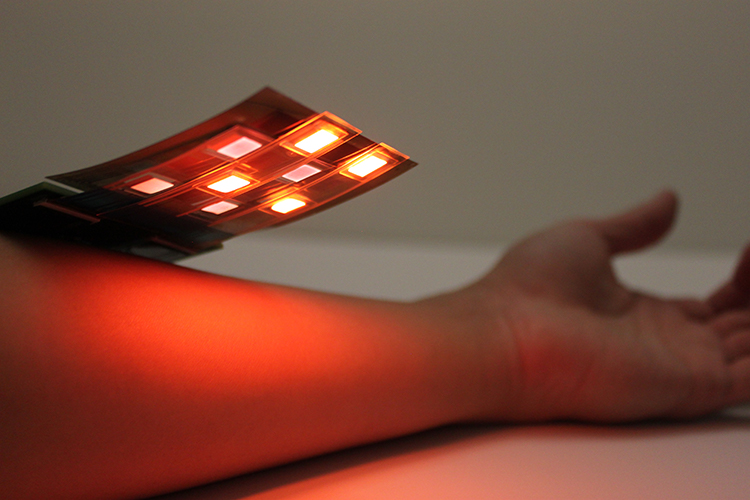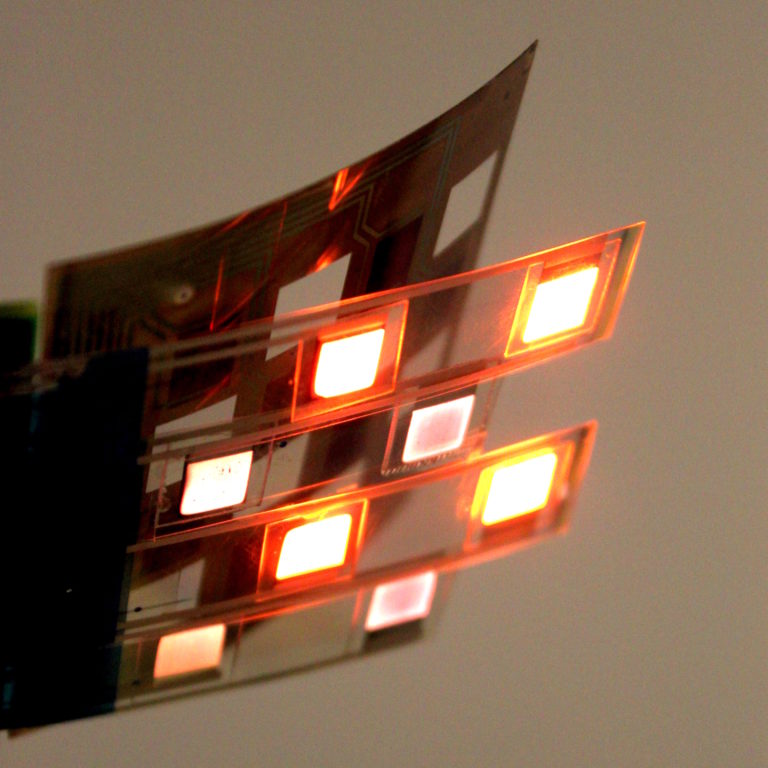Engineers at the University of California, Berkeley, have developed a flexible sensor embedded with red and infrared OLED which is able to map blood-oxygen levels over large areas of skin, tissue and organs. By tracking blood-oxygen, the OLED sensor could help to monitor healing wounds.

(Image: UC Berkely by Yasser Khan, Arias Research Group)
A research team led by Yasser Khan, a graduate student at the Department of Electrical Engineering and Computer Sciences at UC Berkeley, has published their development of the oximeter in the journal Proceedings of the National Academy of Sciences to present.
“When you hear the word oximeter, the name for blood-oxygen sensors, rigid and bulky finger-clip sensors come into your mind. We wanted to break away from that, and show oximeters can be lightweight, thin and flexible,” said Khan.
Conventional oximeters use red LED and IR LED light source to shine through the skin and then detect how much light makes it to the other side. Blood with more oxygen absorbs more infrared light, while oxygen-poor blood absorbs more red light. The sensors then determine the blood-oxygen level by looking at the ratio of transmitted light. However, the LED-based oximeters only work on partially transparent body areas such as the fingertips or the earlobes, and can only measure blood-oxygen levels at a single point in the body.

(Image: UC Berkely by Yasser Khan, Arias Research Group)
The new sensor is assembled from a printed sheet of organic photo detectors on the top and organic red and infrared LEDs on the bottom. With the organic electronics printed on bendable plastic that molds to the contours of the body, the sensor can detect blood-oxygen levels at nine points in a grid and can be placed anywhere on the skin.
“All medical applications that use oxygen monitoring could benefit from a wearable sensor,” said Ana Claudia Arias, a professor of electrical engineering and computer sciences at UC Berkeley. “Patients with diabetes, respiration diseases and even sleep apnea could use a sensor that could be worn anywhere to monitor blood-oxygen levels 24/7.”













